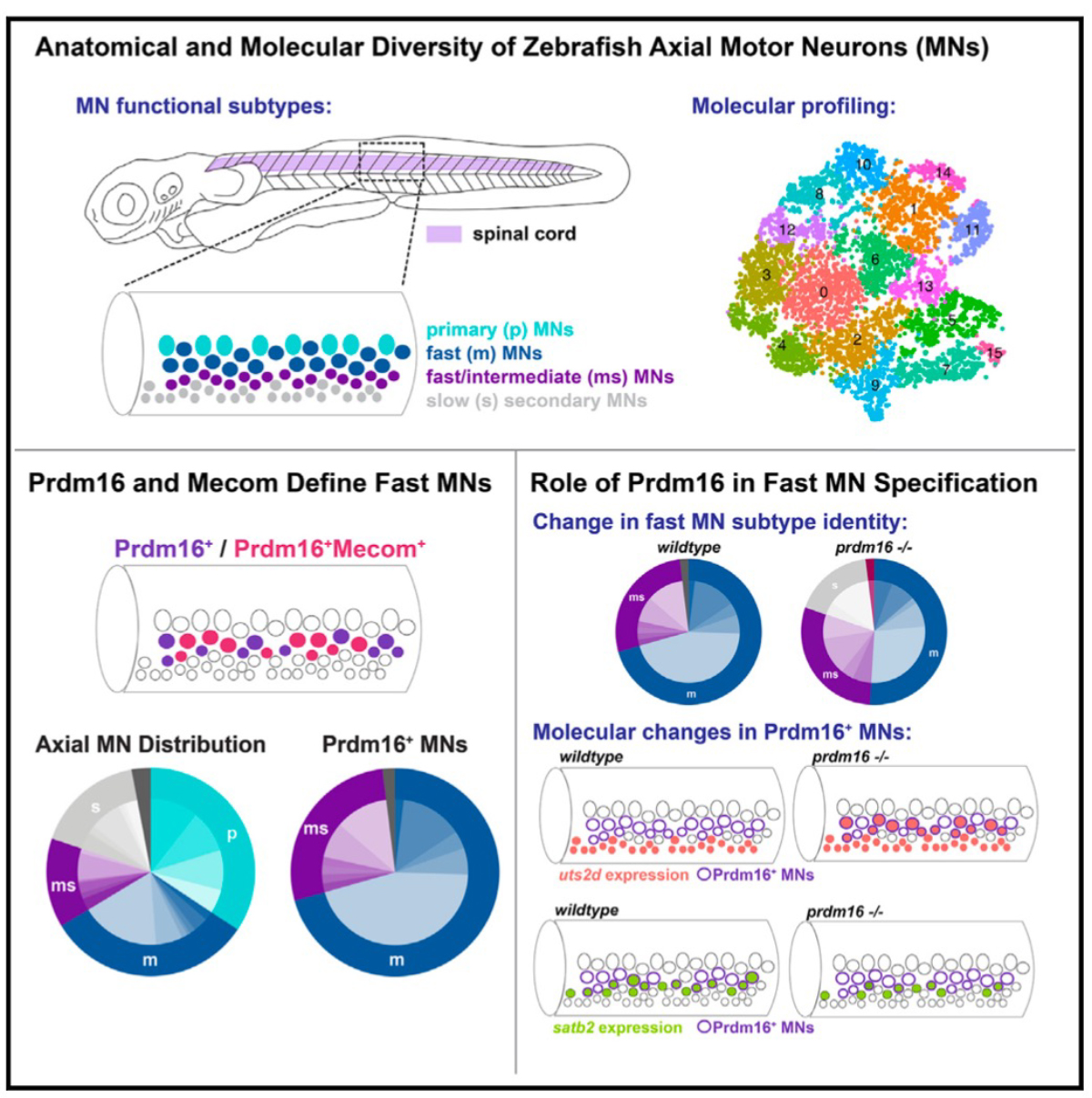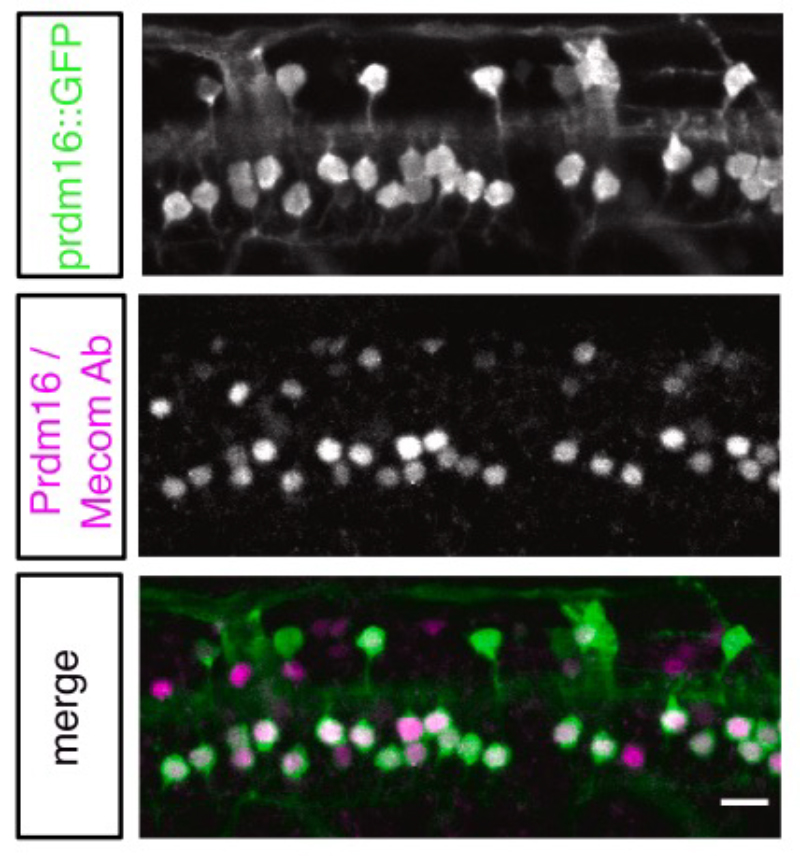Determinants of motor neuron functional subtypes important for locomotor speed
Kawakami Group/Laboratory of Molecular and Developmental Biology
Determinants of motor neuron functional subtypes important for locomotor speed
Kristen P. D’Elia, Hanna Hameedy, Dena Goldblatt, Paul Frazel, Mercer Kriese, Yunlu Zhu, Kyla R. Hamling, Koichi Kawakami, Shane A. Liddelow, David Schoppik, and Jeremy S. Dasen
Cell Reports (2023) 42, 113049. DOI:10.1016/j.celrep.2023.113049
Locomotion requires precise control of the strength and speed of muscle contraction and is achieved by recruiting functionally distinct subtypes of motor neurons (MNs). MNs are essential to movement and differentially susceptible in disease, but little is known about how MNs acquire functional subtype-specific features during development. Using single-cell RNA profiling in embryonic and larval zebrafish, we identify novel and conserved molecular signatures for MN functional subtypes and identify genes expressed in both early post- mitotic and mature MNs. Assessing MN development in genetic mutants, we define a molecular program essential for MN functional subtype specification. Two evolutionarily conserved transcription factors, Prdm16 and Mecom, are both functional subtype-specific determinants integral for fast MN development. Loss of prdm16 or mecom causes fast MNs to develop transcriptional profiles and innervation similar to slow MNs. These results reveal the molecular diversity of vertebrate axial MNs and demonstrate that functional subtypes are specified through intrinsic transcriptional codes.
This study was conducted as collaboration with Schoppik lab at New York University.

Figure1: Zebrafish motor neuron diversity is regulated by the transcription factors prdm16 and mecom. The absence of these transcription factors results in fast motor neurons exhibiting characteristics of slow motor neurons.

Figure2: Overlap of prdm16 and mecom expression in motor neurons using transgenic fish.















